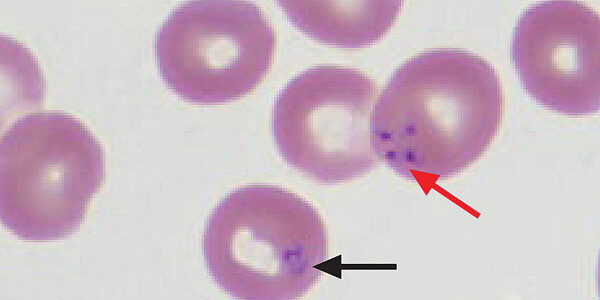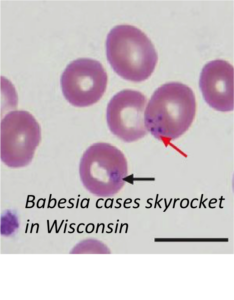Call for your appointment today 914-666-4665 | Mt. Kisco, New York

In Wisconsin, between 2001 and 2015, “there was a 26-fold increase in the incidence of confirmed babesiosis, in addition to geographic expansion,” according to MMWR. [1] The report listed suburbanization, forest fragmentation patterns, and warming average temperatures as potential causes behind the surge.
The rising prevalence of co-infections in rodents may also be to blame for the rise in Babesia cases. When studying the Northeastern region, Diuk-Wasser from Columbia University in New York City found “the prevalence of co-infection tends to be greater in rodents, ranging from 6% to 41%, because they are exposed to multiple tick bites during their lifetime.” [2] Furthermore, she adds, “the prevalence of B. burgdorferi and B. microti co-infection ranges from 0% to 13% in nymphs and from 2% to 13% in adults.”
Babesia can be severe, causing life-threatening symptoms. According to the report, in Wisconsin between 2001 and 2015, “three deaths occurred, one in a woman aged 88 years, and two in men aged 64 and 72 years.” [1] Most cases, however, are treated without hospitalization. Thirty-five percent of the confirmed Babesia cases, and 76% of the probable cases were treated in the community.
Of the confirmed cases:
• 64% = male
• 68% = over age 60
• 96% = onset of illness occurred between April and October
Individuals contracting Babesia through blood transfusions has also been reported. “Three confirmed cases of transfusion-associated transmission were detected in 2008 and one in 2011, before implementation of routine screening for babesiosis by Wisconsin blood banks in 2016,” according to MMWR. [1]
[bctt tweet=”Babesia cases skyrocket in Wisconsin. ” username=”DrDanielCameron”]
The authors point out that perinatal transmission of Babesia has been reported, as well. Transplacental transmission is not described in the MMWR Wisconsin report, but was discussed in a 2017 review of tick-borne diseases in the Cleveland Clinic of North America. [3]
Babesia cases spread throughout Wisconsin
During 2001 – 2005, 20 counties in Wisconsin (28% of the state) reported at least one confirmed case of Babesia. That number rose to 30 counties between 2006 and 2010. And during 2011 – 2015, the number of counties reporting at least one case had jumped to 40.
The actual number of Babesia cases in Wisconsin is unknown. To be considered a confirmed case, the MMWR required a blood smear or a 4-fold increase or greater in B. microti immunoglobulin G [IgG] antibody titers. [1] However, the blood smear has poor sensitivity, the authors point out. “Blood smear exam has a substantially lower sensitivity of detection of parasites (100–500 parasites/μL blood) than does PCR which can be positive at concentrations as low as one to three parasites per μL of blood.”
Related posts:
Study raises concerns for Babesia patients and blood banks
Babesia becomes the number 2 tick-borne illness behind Lyme disease in the Hudson Valley
Sweats may be a sign of Babesia
Babesia and Lyme – it’s worse than you think
References:
- Stein E, Elbadawi LI, Kazmierczak J, Davis JP. Babesiosis Surveillance – Wisconsin, 2001-2015. MMWR Morb Mortal Wkly Rep. 2017;66(26):687-691.
- Diuk-Wasser MA, Vannier E, Krause PJ. Coinfection by Ixodes Tick-Borne Pathogens: Ecological, Epidemiological, and Clinical Consequences. Trends Parasitol. 2015.
- Eickhoff C, Blaylock J. Tickborne diseases other than Lyme in the United States. Cleve Clin J Med. 2017;84(7):555-567.





I wish that I could see Dr Cameron I live on the Illinois Wisconsin border and I have a positive Lyme test but my real problem is the symptoms that I have babesia and I need treatment if I do definitely have it. Can’t get a Dr to order the test and not sure if ins will cover the expense. So in need of help.
I agree with trying to get a dr to order a test. I had a lymes test came up negative but I have never felt right since I had it. lots of leg pain, super fatigue. why can’t we get tested at a county nurse office or something like that? Does the tick look the same for both. i had the tick but the dr said they don’t need it so i am pretty sure i dumped but i could look. what i do have are 2 pics of my arm with bite area very red and looks infected. please advise. thank you
The test are not as reliable as I would like. I have to use clinical judgement to determine who should get treated and what to treat with if the tests are negative. Pictures can be difficult to interpret.